My GEO process (if I ever did one)
GEO (for Generative Engine Optimization) is the recently popular term for optimizing the visibility of a Brand or Product on AI chatbots.
I don’t do GEO, but if I had to, here’s what I’d do (based on 150+ hours of Training and R&D on AI and RAGs).
1 – Audit the current state of visibility
- Check if, outside of RAG’s systems, LLMs know my brand.
- Analyze the frequent terms that come up when I ask for a description of my brand
- Analyze the gap in frequent terms vs. competitors to spot strengths/weaknesses and figure out the right communication angle. I’ve got a tool that does this automatically as the previous steps.
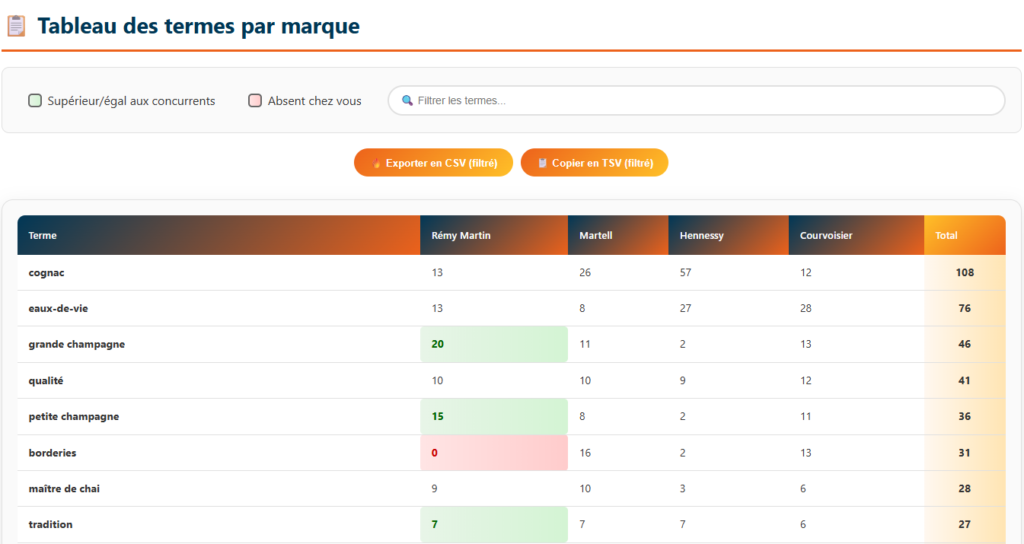
- Run these frequent term tests not only on the latest models but also on older ones and keep track to monitor evolution
- Analyze the generated phrases used to describe my brand and list the inaccurate ones to know the kind of mistakes my persona might see about my brand (same here, I’ve got a tool to help with that)
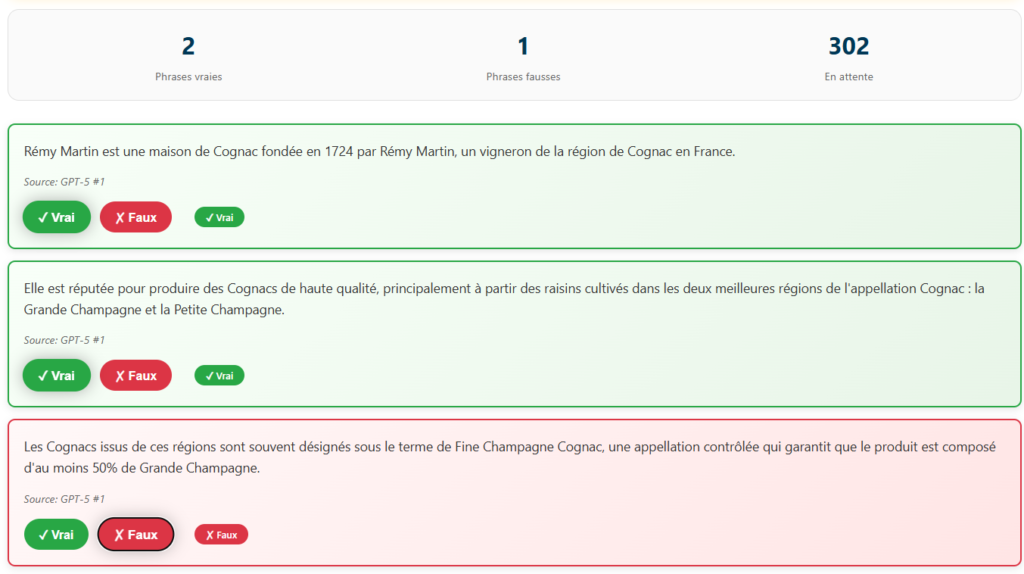
- Check if Common Crawl has recently added my site to its database (through their site : https://index.commoncrawl.org/)
- Generate a top 10/15 list of the most likely brands LLMs would suggest for a given product/service with an estimated probability % (don’t have a tool for this yet, but it’s in my Todo List lol)
I put knowledge in quotes because, strictly speaking, an LLM doesn’t actually have any.
2 – Technical Audit
- Are AI crawlers actually able to access my site, or are they getting blocked by something like robots.txt or a firewall ? I’ve got a tool that automatically checks this against all the major LLM’s crawlers user agents. If you want me to test a site for you, just hit me up (LinkedIn works fine).
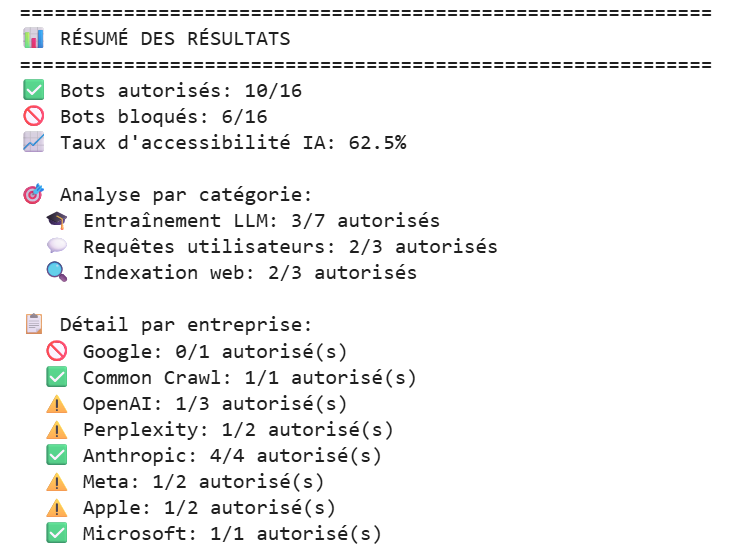
- Run a task with an AI agent (like filling out a form or adding a product to the cart) to make sure it can actually complete the action. AI agents browsing the web on our behalf are already in development, and they might well be part of the future of the internet, so this isn’t something to ignore.
3 – Map Out Query Fan Outs
Query fan-outs are background queries that AI chatbots run on search engines like Google or Bing to retrieve information.
Example: If a user enters the prompt ‘Recommend me a vegan and LGBT-friendly restaurant in Lyon’, the LLM might then search for ‘best vegan restaurant Lyon’ and ‘LGBT-friendly restaurant Lyon’. »
- Bulk collect as many search needs of the persona as possible (via PAA, Reddit questions, keywords, etc.).
- Turn those search needs into prompts, making personalized variations with my brand’s personas.
- Run all those prompts multiple times on AI Mode / Gemini / ChatGPT to grab the query fan outs in bulk, then cluster them. Finally, list out the query fan outs where I’m not ranking in the top 10 on Google / Bing — that becomes a content roadmap. (I’ve got a tool to pull query fan outs from Gemini and ChatGPT, check out my tutorials posted on Linkedin to try them.
4 – Content Creation
- I’d prioritize earned content (on external sites) over my own site’s content, since chatbots tend to favor earned stuff according to this research paper.
- A classic move: make sure your brand shows up in as many ranking / “top” / « best X to do Y » list articles as possible.
- From my list of query fan-outs (but only the ones I know generate outputs mentioning brands), I check the rankings on Google (and maybe also Bing, which I don’t think should be written off), and I reach out to the sites that are already ranking to ask them to add a mention of my brand. Having done this before, I know it’s very time-consuming, so we reserve this action for the query fan-outs we consider highly prioritized or lucrative
- I’d especially focus on BOFU content. For example, an article like “My review of site X: is it trustworthy?” ranks easily on Google/Bing and also gets pulled by ChatGPT when someone asks about the reliability of an e-commerce site before buying. I’ve tested it : it works well, and I think AI can serve as the final step for the persona before conversion. So you might as well control the narrative.
- Keep pushing a quality content strategy that covers the entire topic. If your pages aren’t more “valuable” than basic AI summaries, then honestly your site has no reason to exist. We actually published an article with Paul Grillet that breaks down our process and method to create outstanding content.
5 – Measure
- Check the AI logs (especially the ones triggered by a user request) to get an idea of how many times your content is being pulled as a source — and which content specifically. I’ve got a Linkedin post listing all the logs worth tracking.
- Check for 499 errors in the logs: that’s when ChatGPT decides to cut its visit short because your site took too long to load (so yeah, time to revisit TTFB or other webperf issues).
- Even if it’s marginal, keep an eye on traffic from AI chatbots by adding this regex into your analytics tool.
^.*ai|.*\.openai.*|.*copilot.*|.*chatgpt.*|.*gemini.*|.*gpt.*|.*neeva.*|.*writesonic.*|.*nimble.*|.*outrider.*|.*perplexity.*|.*google.*bard.*|.*bard.*google.*|.*bard.*|.*edgeservices.*|.*astastic.*|.*copy.ai.*|.*bnngpt.*|.*gemini.*google.*$At the end of the day, you’ve got to understand that GEO is way more about branding than traffic acquisition. The goal is to get your brand mentioned, not to expect people to click through to your site (they basically never do).
So apart from monitoring direct traffic or branded searches in search engines (which could just as well come from your overall comms efforts), it’s basically impossible to measure the direct business impact of your GEO strategy.
6 – GEO =/= SEO
SEO can support GEO, but relying solely on GEO to build a visibility monopoly on AI chatbots isn’t enough.
GEO also involves:
- Branding
- Marketing
- PR
- Community management
- Communication
- Persona Research
- E-Reputation
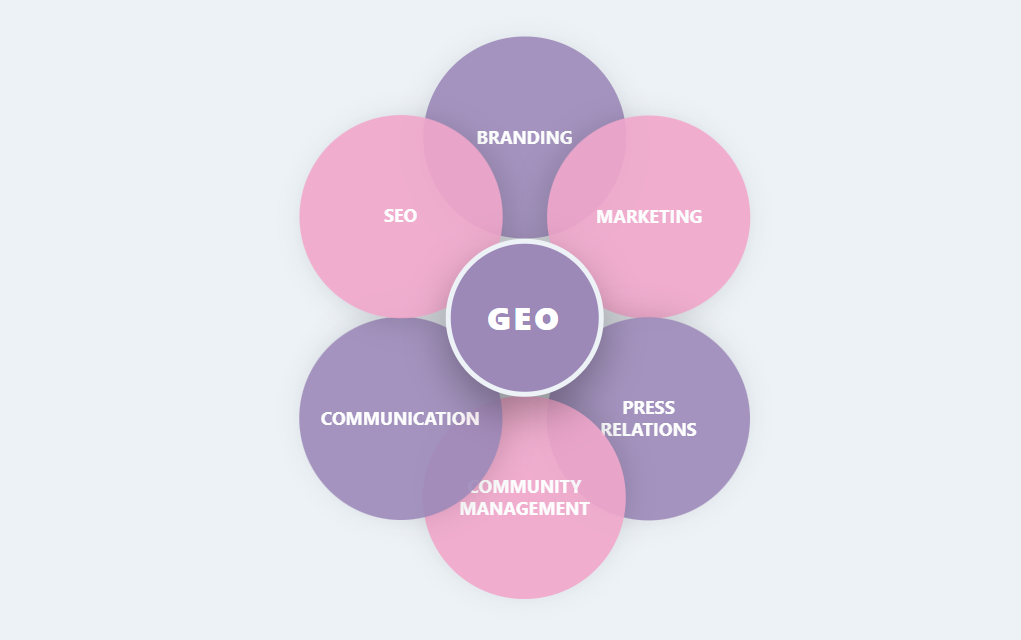
And for all those parts who doesn’t concern SEO, as an SEO consultant i’ll be definitely not able to give any advice to make a strategy that serve the GEO goals. Eveyone to his own trade.
And for sure, any company who keep pushing all those channels will naurally get good visibility on LLMs, even without focusing on GEO specifically.
What I’ll definitely avoid to do in GEO
There’s something worse than not doing GEO: thinking you’re doing good GEO and wasting time and money on actions that make zero sense. Here is a list :
- Analyze sources on prompts I’ve chosen. Not that I wouldn’t do it, but honestly it’s one of the last things on my to-do list. First, we don’t really know people’s prompts, so it’s like trying to rank for a keyword with zero volume just because the boss likes it. Second, nobody clicks the sources, so as long as LLM outputs don’t lead to brand mentions, there’s no point trying to be a source.
- A llms.txt; and generally all these trendy “tips” people copy like sheep because they look easy without ever trying to understand the LLM mechanics. No proof it’s useful = don’t implement it (or test it on personal projects and measure). Otherwise, just invest in understanding how AI works — it’ll save you from falling for hype traps.
- The “summarize an article with AI” button. I don’t even know where to start debunking this because it’s so WTF.
It makes zero sense, You can’t manipulate an LLM’s knowledge and behaviour for everyone directly through its interface. And forcing a reader to leave your page and your site to go to an AI is peak bad UX and wrecks user signals that Google actually cares about.
Nobody ever got results with these buttons; not even the creator. But credit where it’s due: he convinced a lot of “AI / GEO experts” that it was a legit hack.
It just goes to show: for many, the substance doesn’t matter as long as it’s wrapped in pseudo-technical expertise : then it’s “genius.”
And it’s clear that SEOs, so eager to sell AI-related services, don’t give a damn about learning the topic or the credibility of their own offering. If this episode confirmed one thing for me : don’t buy a “GEO” service from an SEO.
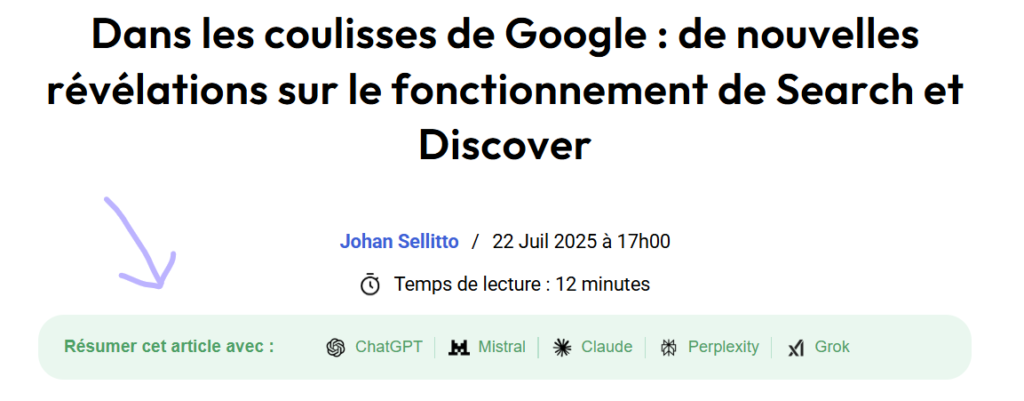
- Thinking AI Overviews are a Google endgame and you’ll always get the blue links. Google’s Ai Mode is the future and positions are going to disappear anyway (and this metric was rarely worth tracking).
- Doing everything “one by one,” basing insights on a single output, or a single query fan out… LLMs are “non-deterministic,” meaning they introduce a ton of randomness. Fifty identical prompts at temperature 0 will still give fifty different results (not even counting user personalization). You have to analyze at scale and generate general inputs that average the outputs.
- Investing in GEO. Unless you’re a startup with millions to burn.
- Going on Reddit and spamming your stuff (everyone hates marketers).
- Believing Structured Data will make a difference. Like llms.txt, it sounds technical and justifies a service, but no one can prove LLM engineers need structured data to fetch info.
Information retrieval engineers hate structured data — they know SEOs spam it. LLMs want to train on your content, not your structured data.
And as always, I could be wrong, but the baseline is: have tangible proof before claiming something is important. And anyway, in SEO, nobody really understands structured data because nobody wants to actually learn it (no, it doesn’t help “better understand” your content).
Why I don’t do GEO
This post won’t change that. FOMO addicts companies will get burned, and wannabe AI experts will rake it in. Good news for them: AI visibility is hard to measure, so it’s tough to prove that their strategy failed 😉
If you feel overwhelmed by “GEO,” before rushing into offering a half-baked service, I can only recommend one thing: seriously educate yourself. Yes, it takes time, but if you want to be an honest, trustworthy service provider, it’s the baseline.
Here are two of my LinkedIn carousels that give a lot of insight into how AI Search and AI in general work — a good starting point, but obviously not enough to fully master the topic. Sorry it’s in french.

Ian Sorin is an SEO consultant at Empirik agency in Lyon, France. Passionate about search engine and LLM algorithms, he actively monitors patents, updates, and research papers to better understand possible manipulations on these systems. In his spare time, he develops tools to help automate analysis tasks and regularly conducts tests on personal projects to discover new GEO and SEO tricks.

